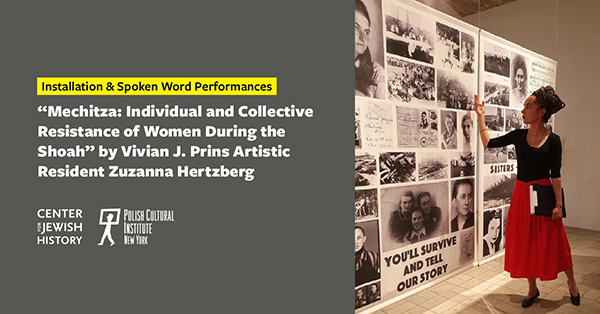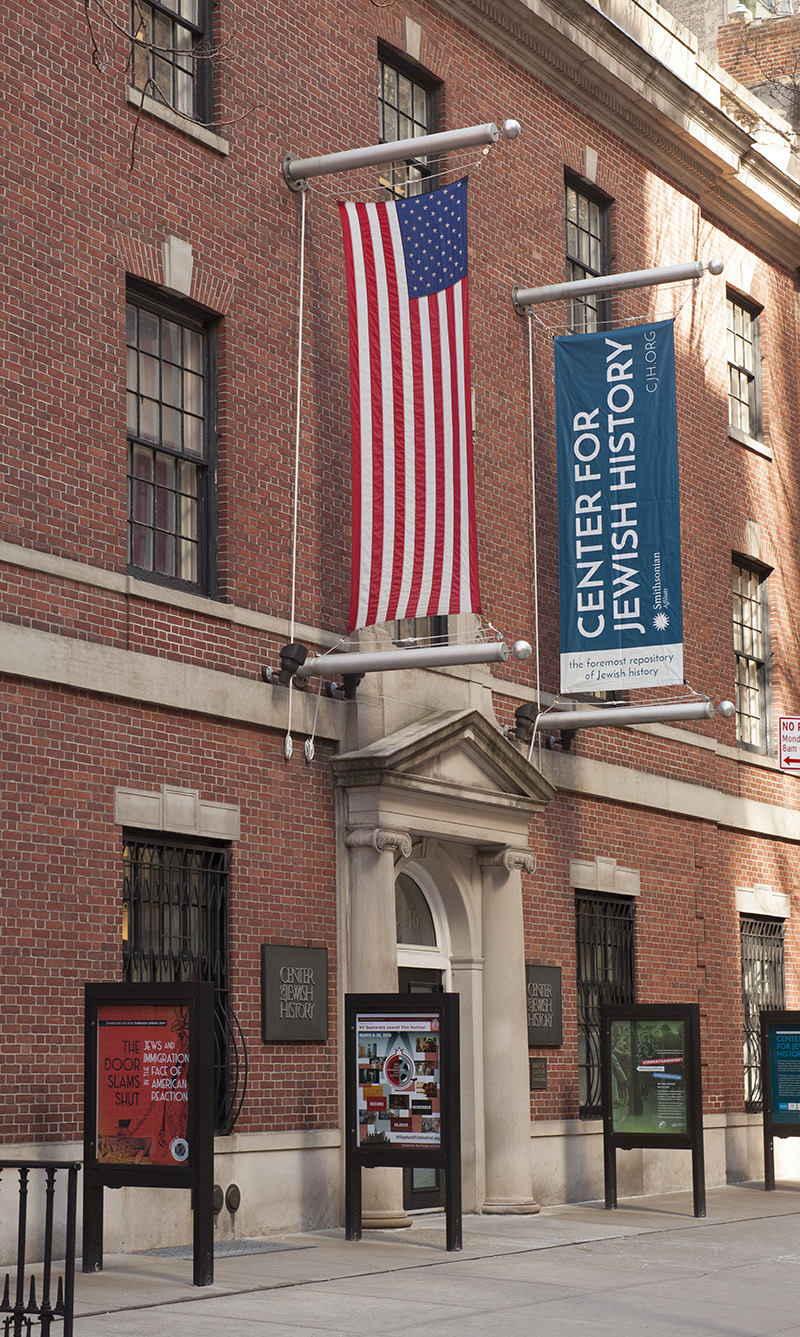curator’s tour & panel discussion

One aspect of Zuzanna Hertzberg’s practice is to recover the herstories of Jewish activism since the early 20th century. For a decade, the artist has meticulously constructed an affective archive of women Jewish resistance fighters. Hertzberg’s thorough research is based on her own Polish-Jewish identity; her intersectional anarchafeminist political engagement; her interest in performance, artivism, omitted narratives and minority perspectives; and her concern with the flaws and blind spots of collective memory. She has compiled a collection of herstories of those who resisted but have not been remembered. She presents the heroines of ghettos and Nazi concentration and extermination camps in Poland, Ukraine, Belarus, and Lithuania—women that she introduced to the historical narrative in Poland, whose strategies could still be used today. We see their ID cards and articles they wrote, along with their young faces on photographs from collective meetings. The documentation is printed on large-format textiles that vaguely resemble banners, flags, or curtains. This is a reference to a mechitza, a partition between women and men in orthodox synagogues, and to the many lines of partition that run through families, systems of education, politics, or the constructions of shared histories.
A long-term, ongoing project, this textile installation and spoken word performance were presented as part of the 2022 Berlin Biennale for Contemporary Art.
The installation will be on view from December 11-January 3. The artist will give three spoken word performances on December 15, 22 and 29 at 6:30 pm.
Text by Joanna Warsza
This installation and program have been made possible by funding from the New York State Council on the Arts with the support of the Office of the Governor and the New York State Legislature and the New York City Department of Cultural Affairs in partnership with the City Council. The artwork has been made possible by funding from the ZAiKS Creativity Support Fund, The Tarbut Fellowship, and Adam Mickiewicz Institute.
Presented by:


curator’s tour & panel discussion
